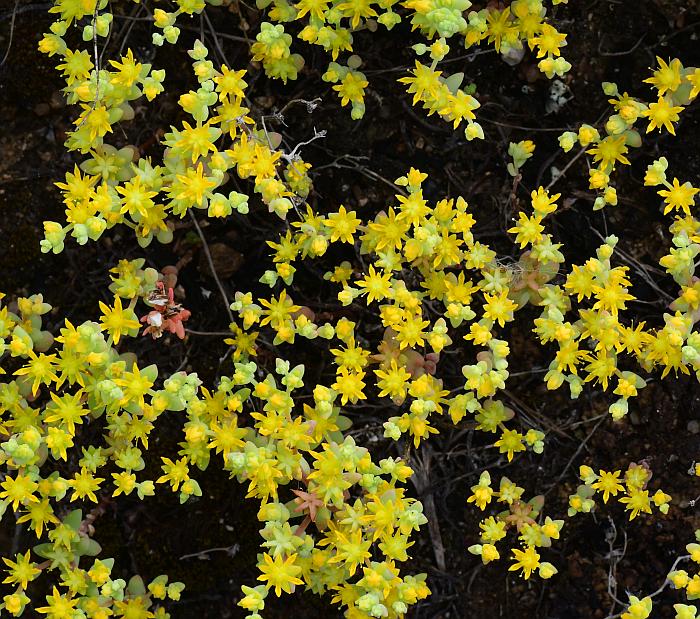Sedum nuttallianum Raf.
Nuttall's Sedum, Yellow Stonecrop

Native
CC = 10
CW = 5
MOC = 4
© SRTurner
Sedum nuttallianum Raf.Nuttall's Sedum, Yellow Stonecrop | |
 |
Native CC = 10 CW = 5 MOC = 4 |
© SRTurner |
|
Family - Crassulaceae Habit - Fibrous-rooted annual forb, the main stems erect or ascending, the foliage and flowers lacking noticeable resinous lines or dots visible upon drying.
Stems - Erect, to 12 cm, green, occasionally becoming reddish-or pinkish-tinged at maturity, not glaucous.
Leaves - Alternate and basal, sessile, simple, sometimes appearing densely spiraled along the stem, usually withered by fruiting time. Blades 4-6 mm long, attached just above the minutely pouched base, linear to narrowly oblong-lanceolate, more or less circular in cross-section, the margins entire, the surfaces light to dark green or bluish green, rarely reddish-tinged at maturity, not or only slightly glaucous, rounded to bluntly pointed at the tip. Leaves only slightly and gradually reduced in size toward the stem tip.
Inflorescences - Panicles with 2-4 branches, these spreading to loosely ascending spikes or spikelike racemes, the flowers oriented along the upper side of each branch, with leaflike bracts on the underside.
Flowers - Sepals usually 5, 1.5-3.0 mm long, narrowly lanceolate to oblong lanceolate, sharply pointed at the tip. Petals usually 5, 2.5-3.5 mm long, oblong-elliptic to oblong-lanceolate, yellow. Stamens with the anthers yellow. Nectaries about as long as wide, oblong to broadly obovate, yellow to milky white. Carpels 4 or 5, greenish yellow.
Fruits - Follicles 1.5-3.0 mm long, spreading at maturity. Seeds 0.5-0.9 mm long, obovoid, very faintly wrinkled or with a few faint, rounded ridges, yellowish brown.
Flowering - May - June. Habitat - Chert and sandstone glades, rocky roadsides. Origin - Native to the U.S. Lookalikes - Sedum carmentosum. Other info. - This native stonecrop is uncommon in Missouri, where it occurs in only a few counties in the southwestern corner of the state. Its main range extends through Texas and Oklahoma, but not much beyond that. The plant is identified by its yellow flowers and by leaves which are fleshy and alternate. The leaf arrangement serves to distinguish the species from S. sarmentosum. Photographs taken at Blue River fishing and hunting reserve, Johnston County, OK, 5-25-2023 (SRTurner). |